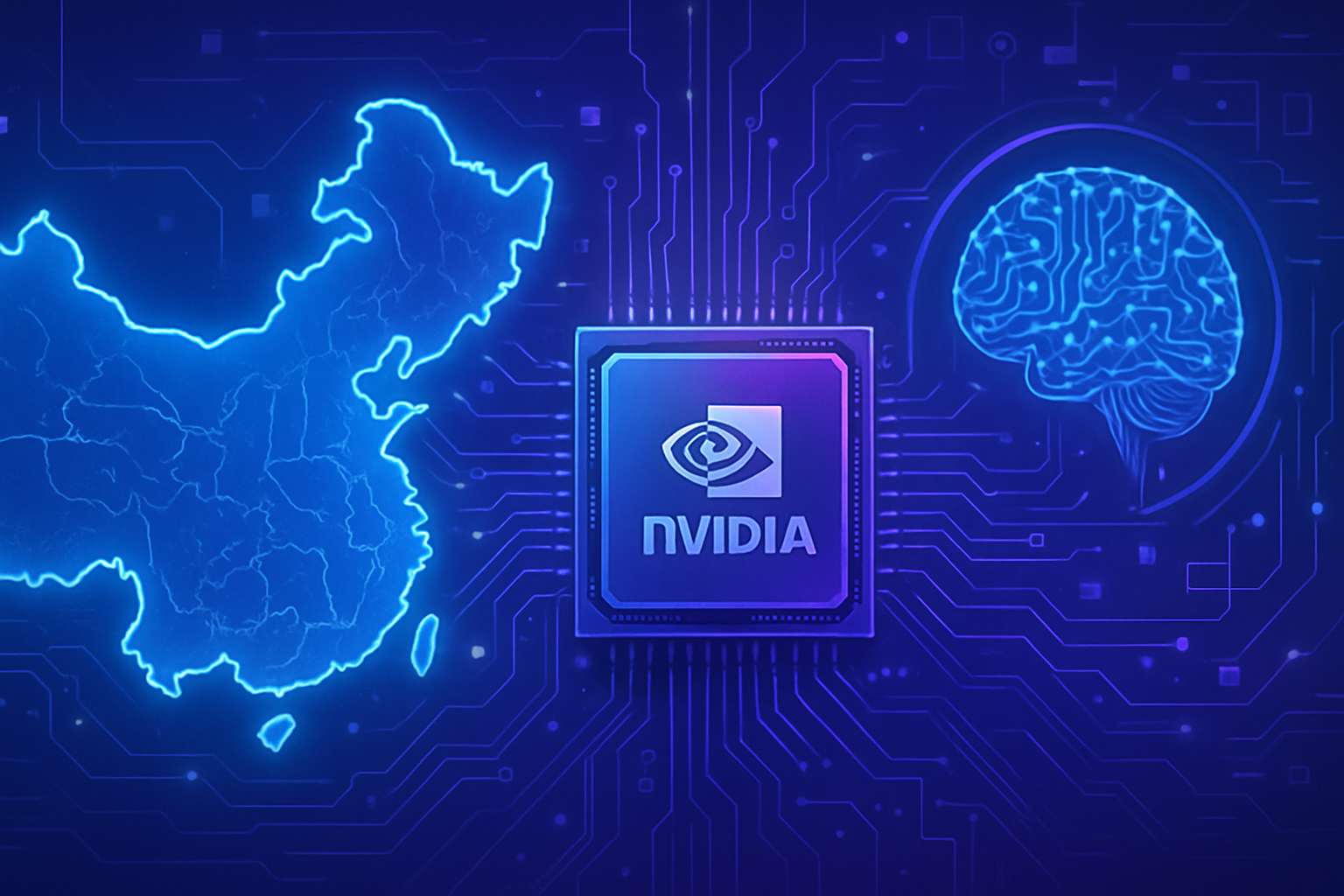Nvidia, a semiconductor giant, is preparing to revolutionize the Chinese market with the launch of its new artificial intelligence chip. This development comes amid a backdrop of significant trade tensions between the United States and China, making this project even more critical. With a market share of 15.5% in China, the stakes are decisive for the company’s future. The entry strategy presents multidimensional challenges, particularly related to restrictions imposed by the U.S. government and the need to innovate amidst rising competition.
Nvidia enters the Chinese market with a new artificial intelligence chip
Nvidia plans to launch a new artificial intelligence (AI) chip aimed at the Chinese market, marking its entry into this competitive sphere. Mass production of this device could begin as early as next month, according to reliable sources.
Economic context
The semiconductor manufacturer, a leader in the United States, has faced turbulence due to trade tensions between Washington and Beijing. Last April, the United States accounted for about 42% of Nvidia’s revenue, compared to only 15.5% for China and Hong Kong, according to financial data compiled by CSI Market.
The U.S. government, under the Trump administration, implemented tariffs, making it difficult for Chinese companies to access advanced technologies. Despite this, China represents a colossal market for Nvidia, hence the company’s interest in AI projects and the development of supercomputers.
Features of the new chip
The new chip, part of the Blackwell architecture series, is expected to be priced between $6,500 and $8,000, a cost lower than that of its predecessors, which ranged from $10,000 to $12,000. This price reduction raises questions about the technical sophistication and manufacturing requirements, with analysts noting that it could reflect less advanced specifications.
The production of this chip will exclude the use of advanced packaging technologies, thus contributing to a more affordable manufacturing cost. Previous attempts by Nvidia to develop a more modest version of its H20 chip to circumvent export restrictions did not succeed.
Impact of export restrictions
The restrictions imposed by the United States limit memory bandwidth for GPU chips, hindering AI development by other nations. Despite this, China has managed to design the AI model DeepSeek, using these lower-tier chips, with a reported development cost of only $6 million.
Nvidia’s response
A Nvidia representative stated that they are analyzing their limited options in light of current regulations. The company still needs to validate a new product design and obtain approval from the U.S. government. Currently, Nvidia is excluded from the Chinese data center market, estimated at $50 billion.
Market disruptions caused by trade tensions
Following Trump’s announcement of a 145% tariff on products from China, Beijing retaliated with equivalent tariffs on American products, reaching 125%. U.S. Treasury Secretary Scott Bessent met with his Chinese counterparts to negotiate a temporary reduction of tariffs.
Nvidia plans to begin production of the Blackwell chip as early as June. However, the sales timeline to China remains uncertain, and the consequences of trade tensions will continue to have a significant impact on the market. This development will mark a significant moment for Nvidia in its quest to conquer the Chinese sector, despite the current obstacles.
Collaborations and local initiatives
Nvidia continues to collaborate with its partners to develop supercomputers on U.S. soil. The creation of a specialized facility in Houston aims to strengthen its market position and address the technological challenges posed by AI projects.
Nvidia’s path is fraught with challenges, but the company’s determination to establish ties in the Chinese market could transform future prospects for AI.
For more information about Nvidia’s initiatives, including its recent collaboration with partners to develop supercomputers, check out this article here.
Frequently asked questions about Nvidia and the Chinese market
What is the new artificial intelligence chip launched by Nvidia for the Chinese market?
Nvidia is about to launch a new artificial intelligence chip, part of the Blackwell architecture series, which is expected to begin mass production next month.
What are the specifications and expected cost of the new chip?
The new artificial intelligence chips are expected to cost between $6,500 and $8,000, which is significantly cheaper than previous versions that cost between $10,000 and $12,000. However, this also indicates lower specifications and simpler manufacturing requirements.
How does Nvidia plan to enter the Chinese market despite trade tensions?
Despite U.S. restrictions on China’s access to high-quality chips, Nvidia sees the Chinese market as a growth opportunity and intends to launch its new chip to capitalize on the potential of this market.
What are the implications of U.S. export restrictions on the chip launch?
The U.S. export restrictions limit the memory bandwidth of GPU chips, hindering AI development by other countries. However, China has already demonstrated its ability to create AI models like DeepSeek, using lower-tier chips available in its market.
How does Nvidia position itself against competitors in the artificial intelligence sector in China?
Nvidia remains a market leader thanks to its technical expertise. However, competition is strong, especially with the advancements made by Chinese companies leveraging available resources and technologies.
What challenges will Nvidia have to overcome to succeed in China?
Nvidia must navigate through trade tensions between the United States and China while obtaining U.S. government approval to access the Chinese market, which represents a $50 billion potential for data centers.
Is the new chip designed to meet specific needs of the Chinese market?
Although the new chip is less expensive, it aims to address a growing demand for accessible AI solutions in China, despite the potential impact of its reduced specifications.
When will the production of the Blackwell chip begin?
Production of the Blackwell chip is expected to start in June, but the market launch date in China remains uncertain.
What measures has Nvidia taken to comply with U.S. regulations when manufacturing this chip?
Nvidia had to adjust its product designs to circumvent export controls, but this led to difficulties, including the failure of an attempt to reconfigure the H20 chip to adapt to restrictions.






